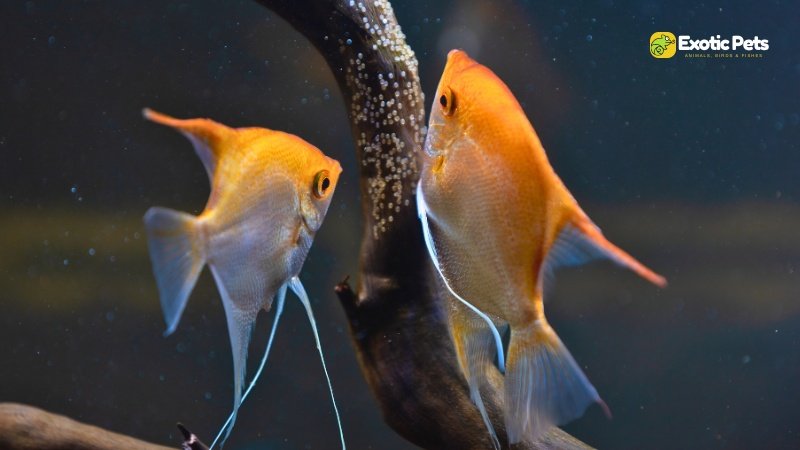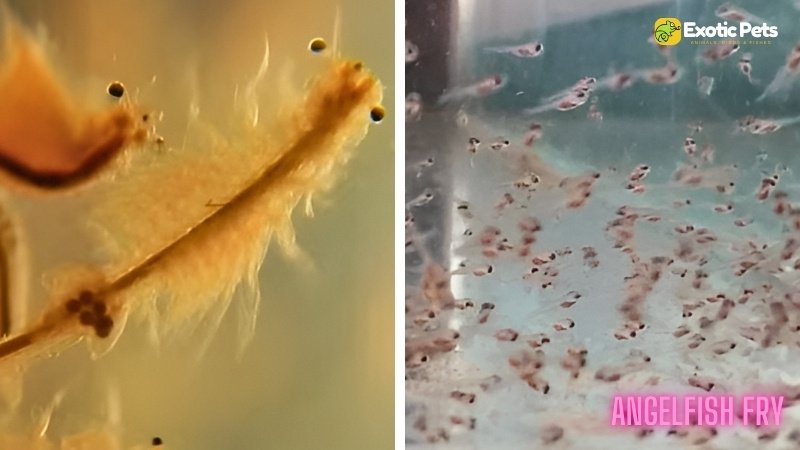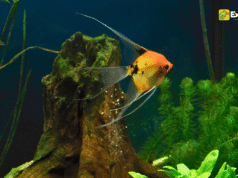
Breeding angelfish is a fascinating and rewarding experience that offers aquarists the chance to observe these beautiful creatures in a new light. Understanding the process requires a blend of knowledge, patience, and careful planning. But who can breed angelfish, what exactly is involved in the process, when is the right time to start, where should it be done, and why should you consider breeding angelfish? This article will answer these questions and provide a detailed, step-by-step guide on how to breed angelfish successfully.
Who Should Breed Angelfish?
Anyone with a passion for aquariums and a keen interest in fishkeeping can consider breeding angelfish. However, it is essential to have a basic understanding of aquarium maintenance and the specific needs of angelfish before embarking on this journey. Breeding angelfish requires commitment, as it involves not only the care of the adult fish but also the delicate handling of eggs and fry.
What Does Breeding Angelfish Involve?
Breeding angelfish involves selecting a healthy pair, preparing an appropriate breeding environment, and managing the eggs and fry until they reach maturity. This process can be complex and requires a controlled environment to ensure success. It is important to understand the natural behaviors of angelfish and how to create conditions that mimic their natural habitat to encourage breeding.
When is the Right Time to Breed Angelfish?
The timing of breeding can depend on various factors, including the age and health of the fish, water conditions, and environmental factors. Angelfish typically reach sexual maturity at around 6 to 12 months of age, and this is generally the best time to start breeding them. Monitoring the fish for signs of readiness, such as increased aggression or pairing behavior, can help determine the optimal breeding time.
Where Should Breeding Take Place?
A dedicated breeding tank is essential for the successful breeding of angelfish. This tank should be separate from the community tank to provide a controlled environment that meets the specific needs of breeding angelfish. A 20-gallon tall aquarium is recommended as the minimum size, as angelfish prefer tall tanks that allow them to feel secure. The tank should be equipped with a sponge filter, appropriate water parameters, and flat surfaces such as slate or broad-leaf plants for egg laying.
Why Breed Angelfish?
Breeding angelfish can be a highly rewarding experience for aquarists, providing the opportunity to observe and nurture the growth of these fish from eggs to adulthood. It can also be a profitable venture, as angelfish are popular in the aquarium trade. Additionally, breeding angelfish contributes to the preservation of different strains and helps to maintain healthy genetic diversity within the species.
Preparing for Breeding Angelfish
Selecting the Right Breeding Pair of Angelfish

The first step in breeding angelfish is selecting a healthy pair. Angelfish typically form pairs naturally, but if you are selecting a pair yourself, look for signs of compatibility and health. A good breeding pair should display vibrant colors, have no signs of disease or deformities, and show interest in each other.
It’s important to observe the fish for any signs of aggression or stress, as this can indicate that they are not a good match. Additionally, selecting fish from different genetic lines can help prevent inbreeding and promote healthy offspring.
Angelfish Water Requirements
Angelfish are native to the Amazon basin, where they thrive in warm, soft, acidic water. However, domestic angelfish have adapted to a wide range of water conditions, and most will do well in water with a pH between 6.5 and 7.5 and temperatures ranging from 72°F to 82°F. If your water is extremely hard or alkaline, consider using a de-ionization filter or reverse osmosis (R.O.) filter to bring it into an acceptable range. It is important to maintain stable water conditions, as fluctuations in pH or hardness can stress the fish and hinder breeding efforts.
For breeding purposes, it is often recommended to keep the water temperature at around 80°F (27°C), which mimics the warm conditions of their natural habitat and encourages spawning. Be mindful that temperatures outside the ideal range can have adverse effects—lower temperatures may result in infrequent spawning, while higher temperatures can reduce oxygen levels and promote bacterial growth.
Setting Up the Breeding Tank

When setting up a breeding tank, consider the height of the aquarium, as angelfish prefer tall tanks with a minimum depth of 12 inches. This depth allows them to feel secure and reduces stress, which is crucial for successful breeding. A 20-gallon “high” tank is the smallest size recommended for housing a pair of angelfish. The tank should be equipped with a reliable bio-filter, such as a sponge filter, to maintain water quality by eliminating nitrites and ammonia, which angelfish are particularly sensitive to.
In terms of decor, avoid using gravel in the breeding tank, as it can trap debris and uneaten food, leading to poor water quality. Instead, opt for potted plants, cured driftwood, and spawning slates. While angelfish may initially spawn on plants or driftwood, they typically switch to spawning slates once they have successfully laid eggs on them.
To further enhance the breeding environment, consider painting the outside bottom of the tank a dark matte color to reduce reflections, which can stress the fish. Some breeders also find that adding a dither fish—a small, non-aggressive fish—can help make angelfish bolder and more comfortable in the tank.
The Breeding Process
Courtship and Spawning
Once the breeding pair is introduced to the breeding tank, courtship behavior will begin. This can include increased aggression, chasing, and cleaning of potential spawning sites. Angelfish are known to be meticulous about choosing a suitable location to lay their eggs, and they will often clean the chosen surface thoroughly.
Spawning typically occurs within a few days of courtship. The female angelfish will lay a line of eggs on the chosen surface, and the male will follow behind to fertilize them. This process can take several hours, during which the pair will remain very close to the spawning site.
Caring for the Eggs
After spawning, the angelfish will diligently guard and care for the eggs. The eggs are typically clear or light amber in color and should develop a dark spot in the center within a day or two, indicating fertilization. It’s crucial to maintain optimal water conditions during this period, as poor water quality can lead to fungus growth on the eggs.
Some breeders choose to remove the eggs to a separate tank to prevent the parents from eating them, which can happen if the fish feel threatened or stressed. If you decide to move the eggs, ensure that the new tank has the same water parameters and is equipped with an air stone to provide gentle water movement and prevent fungus.
Also Read: How to Tell if Angelfish Eggs are Fertilized?
Raising the Fry

Hatching and Initial Care
The eggs will typically hatch within 48 to 60 hours, depending on the water temperature. The newly hatched fry, known as wrigglers, will remain attached to the spawning site for another 3 to 5 days, during which they absorb their yolk sacs. It’s important to maintain stable water conditions and avoid disturbing the fry during this time.
Once the fry become free-swimming, they will start to search for food. At this stage, they should be fed infusoria or commercially available fry food. It’s important to feed them small amounts several times a day to ensure they get enough nutrition. Overfeeding should be avoided as it can lead to poor water quality.
Gradual Growth and Development
As the fry grow, their diet can gradually be transitioned to include baby brine shrimp and finely crushed flakes. It’s important to continue feeding them small, frequent meals to support their rapid growth. The fry should be closely monitored for any signs of disease or deformities, and any affected individuals should be removed to prevent the spread of illness.
During this stage, regular water changes are essential to maintain water quality and support healthy development. As the fry grow larger, they may need to be moved to a larger tank to provide enough space and prevent overcrowding.
Common Challenges in Breeding Angelfish
Parental Cannibalism
One of the biggest challenges in breeding angelfish is the possibility of parental cannibalism. This can occur if the parents feel threatened or stressed, or if the tank conditions are not optimal. To prevent this, ensure that the breeding tank is placed in a quiet location with minimal disturbances. Some breeders choose to separate the eggs or fry from the parents to eliminate the risk of cannibalism.
Disease and Infection
Eggs and fry are particularly vulnerable to disease and infection. Common issues include fungal infections on the eggs and bacterial infections in the fry. Maintaining clean water and using antifungal treatments if necessary can help prevent these problems. It’s also important to quarantine any new fish before introducing them to the breeding tank to prevent the spread of disease.
Also Read: 13 Common Angelfish Diseases and Illnesses With Treatment
Poor Fertility Rates
Sometimes, a breeding pair may produce eggs that do not develop or hatch successfully. This can be due to poor water quality, inadequate nutrition, or genetic factors. Ensuring that the breeding pair is healthy, well-fed, and housed in optimal conditions can help improve fertility rates.
One of the most rewarding moments was watching the fry grow and develop their distinct angelfish markings. The entire process, from courtship to watching the fry become free-swimming, is fascinating and offers a unique insight into the life cycle of these fish. For anyone considering breeding angelfish, I highly recommend taking the time to research, prepare, and enjoy the journey. It’s a challenging but incredibly rewarding experience that deepens your connection with the aquarium hobby.
Tips from an Experienced Angelfish Breeder
- Patience is key: Angelfish breeding requires patience and observation. Don’t be discouraged if your first attempts don’t result in successful spawning.
- Provide a stress-free environment: Minimize disturbances and avoid sudden changes in water parameters to create a calm and conducive breeding environment.
- Separate the fry: As the fry grow, separate them into different tanks based on size to prevent aggression and ensure adequate food distribution.
- Learn from the experience: Each breeding attempt offers valuable insights. Observe the behavior of the angelfish pair, monitor the fry’s development, and adjust your techniques accordingly.
Conclusion
Breeding angelfish is a rewarding endeavor that requires knowledge, preparation, and dedication. By selecting the right pair, creating an optimal breeding environment, and carefully managing the care of eggs and fry, aquarists can successfully breed angelfish and enjoy the satisfaction of raising these beautiful fish. Remember, each breeding experience offers the opportunity to learn and improve, so don’t be discouraged by initial setbacks. With patience and perseverance, you can become a successful angelfish breeder.
Remember, the journey of angelfish breeding is a continuous learning experience. Embrace the challenges, celebrate the successes, and most importantly, enjoy the fascinating world of angelfish reproduction. Happy breeding!










